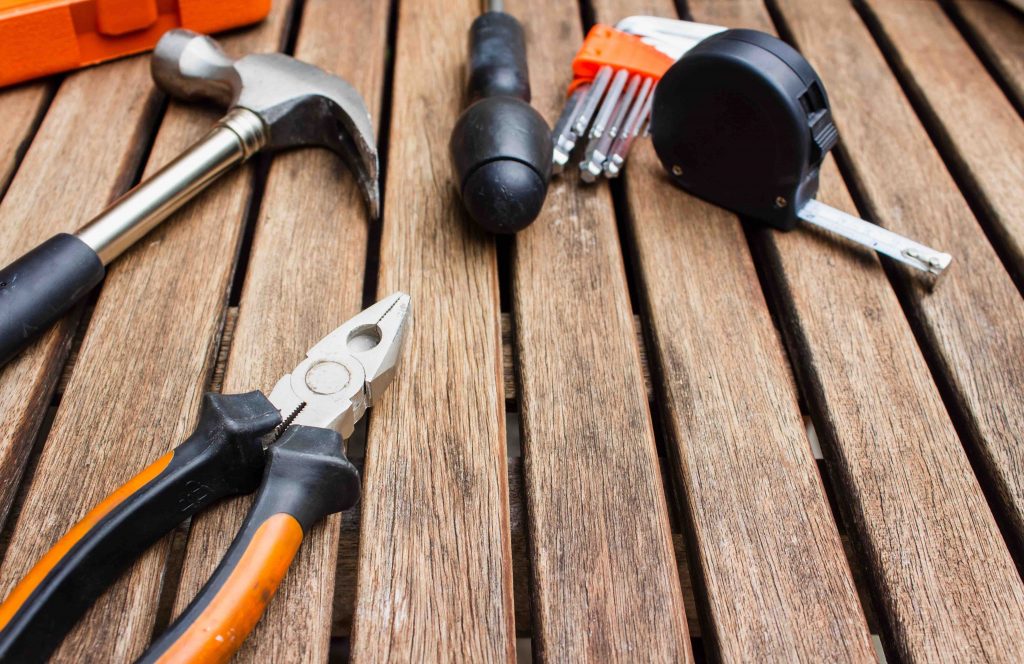Whether you consider yourself quite confident with DIY projects or you are just getting started, you can’t achieve anything without your precious tools. In this article we’re going to list the best tools to have and why, so you can make sure you’ve got everything you need before you get started.
A Proper Toolbox
While it might sound obvious, you’ll definitely notice the difference that investing in a good quality toolbox makes. If you are doing multiple jobs at once or a job that requires you to move around a lot, having a toolbox that keeps all your tools together will make it easy to transport them – while also preventing you from losing an important tool and resorting to spending money on a new one.
Hammer
A hammer is such an essential tool in projects that simply the words “DIY” can make images of a hammer pop up in your head, and it’s easy to see why. A claw hammer can not only bang in nails to keep things together, but can fix mistakes or remove old nails too, they’re also great for therapeutically smashing unneeded furnishing apart.
Alternative: Magnetic Hammer
Going one step further and investing in a magnetic hammer will make tasks even easier. The magnet can keep nails in place and enable you to keep your second hand free, or prevent you from losing nails and stepping on them later. Due to the materials they are made out of, magnetic hammers are more expensive than regular ones, but their usefulness makes up for the cost.
Screwdrivers and Allen Keys
Just like a hammer, these are essential for both fixing things in place and removing pieces. You’ll need a variety of different sized screwdrivers to be properly equipped for a task, at least 4 or 5, ranging from big and small versions of both Phillips head screwdrivers and flat head ones. Plus, a tiny screwdriver (not the toy ones) may also be handy to have for any small awkward parts. Allen keys come free with a lot of things so make sure to store one in your toolbox.
Alternative: Multibit Screwdriver
Again, there’s another alternative to the above; buying a multibit screwdriver will mean you won’t need a whole set of different sized screwdrivers filling up your toolbox and will instead only need to change the shape and size of the bit. Some bits can even be loaded into a drill to make certain tasks even simpler.

Staple Gun
A staple gun has many uses. It can be used for upholstery, building furniture, woodwork and even construction jobs such as attaching flooring or roofing. Staple guns are incredibly useful to have and come in a range of different types, you can start off with a simple manual staple gun or you can go for the best electric staple guns or pneumatic staple gun, depending on how much power, mobility, and accuracy you need for the task.
Cordless Drill
As briefly mentioned earlier, these can make a great team with a multibit screwdriver and you’ll probably use them for most DIY jobs. Your standard cordless drill will be in the £30-£50 range with a battery that gives you a few hours of drilling. Look for one with a hammer drill setting, this will make drilling into tough materials like brick much easier.
Screws, Nails, Plugs, Staples, Tacks, etc.
Of course, with tools like hammers, screwdrivers and staple guns, you’ll need their “ammunition”. A lot of shops sell boxes of a combination of screws and nails that are separated into different compartments so you can grab what you need straight away.
Measuring Tools
For jobs that require some precise measurements, make sure you have both a tape measure and spirit level to avoid having to spend time removing and readjusting nails and screws.
A spirit level is a must have for a variety of DIY projects around the home. When it comes to putting up shelves and hanging pictures, it’s extremely important that they are level. Also, reputable brands will offer a guarantee of how long the level will remain calibrated for, thereby giving you peace of mind when using the spirit level.
Cutting Tools
Saws are another essential when you think of “DIY”. You’ll need a range of cutting tools such as saws for cutting down wood and Stanley knives for cutting material.
Last But Not Least, Protective Equipment
Perhaps the most important thing of all, make sure to wear safety gloves, goggles and even a face mask to protect you from inhaling dust and other materials or getting any in your eyes. A head torch will also help you see properly and prevent you from hitting/cutting your hands. Good luck and safety first!






